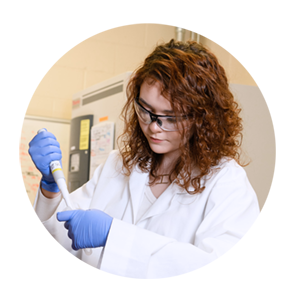The research interests of our faculty range from theoretical to translational and applied, from the experimental wet lab to the computational dry lab and everything in between. The activities of the research groups in these areas encompass most of the traditional branches of chemical engineering as well as several of the newer areas, such as advanced materials, bioengineering, bioseparations, visual process modeling, and molecular simulation. Because Chemical Engineering occupies all of Earle Hall, students and faculty can go readily from the classroom to the lab. This allows many students to work alongside faculty in research and computational labs easily.
Faculty LabsFocus Areas
The Research Cluster descriptions provide a glimpse into the department's cutting-edge exploration, with boundaries constantly blurred and highly overlapping between focus areas. This research is performed not just by our faculty but by our undergraduates, M.S. candidates, and doctoral students.
-
Biotechnology and Biomedical Science
Unraveling how combinations of drugs can be used to more effectively treat cancer; using biological systems to manufacture chemicals and drugs more sustainably and economically; treating diseases through innovative materials for drug delivery; modeling the molecular dynamics of viruses infecting cells; reducing the cost of biopharmaceutical manufacturing through novel bioreactor control and continuous separation processes. These are just a few of the challenges our faculty in the Biotechnology and Biomedical Science Research Cluster address using Chemical Engineering principles. Research projects are supported by NIH, NSF, DoD, NASA, and various industrial sponsors. Graduates are highly sought and have found employment in major biopharmaceutical companies, startup biotech companies, national labs, and academia.
Faculty:
Marc Birtwistle
Sarah Harcum
Scott Husson
Jessica Larsen -
Advanced Materials, Polymers and Nanoscience
Polymers and advanced functional materials are ubiquitous in contemporary fields such as energy storage and transport, water purification, and drug delivery. Here at Clemson, the faculty in the Advanced Materials, Polymers, and Nanoscience Research Cluster are working on a myriad of topics, including the development of low-cost carbon fibers for the automotive industry from sustainable sources such as lignin, advanced polymer membranes for water desalination, and radionucleotide detection, next-generation material replacements from green chemistry processes like cellulose nanomaterials for microelectromechanical systems (MEMS), nanocomposites for reduced cost and improved lifetime energy storage, and brain-penetrating nanomaterials that deliver enzyme therapeutics for treating neurodegenerative disease and brain tumors. Research projects in the cluster are supported by NSF, DoD, and DOE. Graduates have ample employment opportunities across academia and industry.
Faculty:
Ana Alba-Rubio
Eric Davis
Scott Husson
Jessica Larsen
Amod Ogale
Mark Thies
Ming Yang -
Energy and Sustainability
The world population is increasing towards what many propose is near capacity, while the supply of natural resources traditionally used to support this population is ever decreasing. In many cases, it has a detrimental environmental impact. The Energy and Sustainability Research Cluster faculty are at the forefront of research efforts to facilitate this necessary global transition as seamlessly as possible. For example, projects here are creating novel chemical processes to convert the next-to-unusable 1.3 billion tons of U.S. lignin biomass into valuable feedstocks, novel polymer-based energy storage and battery solutions for dealing with intermittent renewable sources, new sustainable materials for energy-efficient housing, and lightweight wind turbine blades, and intelligent algorithms and delivery infrastructure designs that are robust to the vast amount of uncertainty in and complex dynamic behavior of wind and solar energy sources. The NSF and DOE currently fund such projects, and graduates are employed in a wide array of careers in environmental and chemical engineering science.
Faculty:
Ana Alba-Rubio
Scott Husson
Mark Roberts
Mark Thies
Ming Yang -
Catalysis, Chemical, and Biochemical Reactions
Catalysts alter chemical reaction rates in both traditional processes and biochemical systems. They also have substantial societal importance, as they are estimated to be involved with at least 35% of the global gross domestic product. At Clemson, our Catalysis, Chemical, and Biochemical Reactions Research Cluster faculty are learning how to make catalysts more efficient, more effective, and more durable. Some of our catalyst applications are converting sustainable biomass into widely usable fuels and chemical products, reducing carbon dioxide emissions to improve energy independence and sustainability, producing versatile and less dangerous ethanol fuels from geologic and biologic natural gas sources, and generating ammonia fertilizer from air and water alone to better feed the world’s poorest regions. Research projects are supported by NSF, DOE, and NASA. Our graduates have gone on to careers in industry, academia, and government agencies such as NASA.
Faculty:
Ana Alba-Rubio
David Bruce
Ming Yang -
Computing, Systems Engineering, and Molecular Simulation
Mathematical models, from pencil and paper first-principles to big data-based machine learning, to their supercomputer implementations, not only facilitate deeper scientific understanding of chemical and biomolecular processes but as engineering tools also reduce lab-to-market cost and translational time by orders of magnitude. Our Faculty in the Computing, Systems Engineering, and Molecular Simulation Research Cluster develop and use state-of-the-art computational tools to describe, for example, catalytic quantum chemistry, biomolecules in native cellular environments from an atomistic viewpoint, chemical and biochemical manufacturing processes from deeply intensified to traditional scales, and chemotherapy drug responses of malfunctioning signaling pathways in cancer cells. Example applications include ammonia synthesis catalysts, water purification membranes, energy storage using gas hydrates, reducing process scale through intensification, and tailoring cancer drug cocktails to individual patients. Clemson’s world-class Supercomputer Palmetto is routinely used with ~400 Teraflops, ~23,000 CPUs, and ~400 GPUs. Funding sources include NSF, DoD, DoE, NIH, and various industrial partners. Graduates are in high demand in academia and industry alike.
Faculty:
Marc Birtwistle
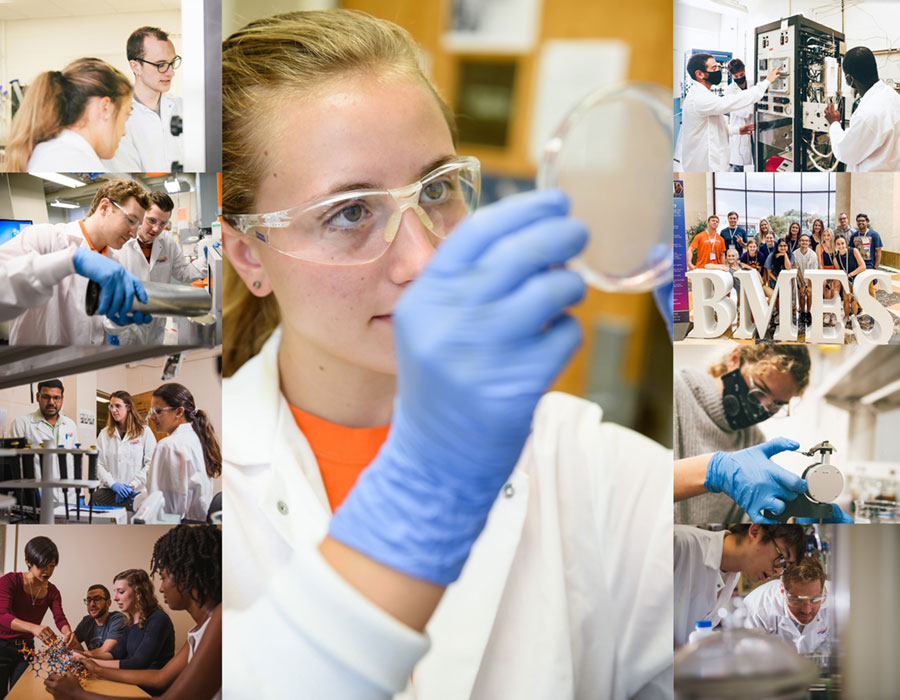
There are numerous opportunities for undergraduates to participate in departmental research or be a part of a Creative Inquiry team advised by a faculty member. About 58% of our students participate in research during the school year and summer.
Graduate students may specialize in any of the research areas. The research encompasses most of the traditional branches of chemical engineering as well as several of the emerging areas such as advanced materials, water-energy-food-nexus, sustainability, green chemistry, molecular modeling and simulation, nanotechnology, systems biology, synthetic biology, drug delivery, and renewable energy systems.
“It’s the process that goes into it. That’s why I want to be a chemical engineer. It’s trying to solve problems that you see in the world. Having the ability to practice that before I go to graduate school and start my career has been really rewarding.”
Hayden TharpeBeckman ScholarChemical Engineering
Facilities Overview
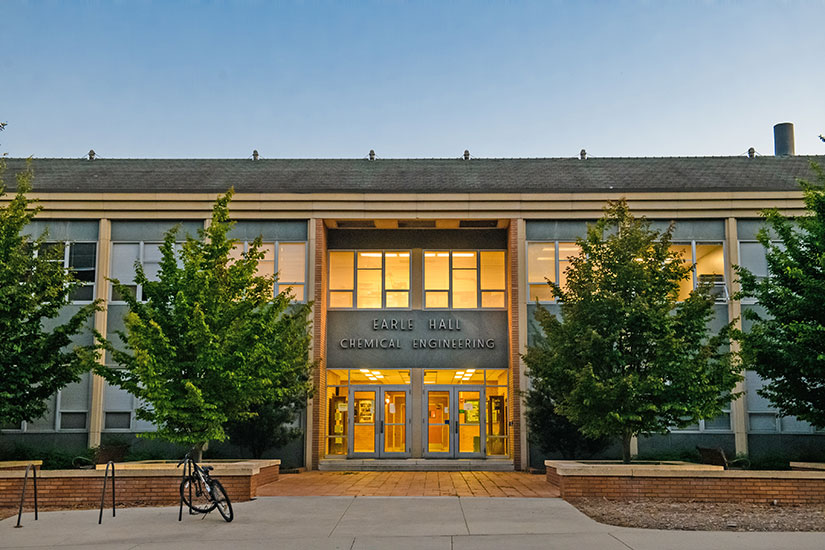
Earle Hall
Dedicated as the chemical engineering building in 1959, Earle is home to intense research in chemical and biochemical processes. The Chemical and Biomolecular Engineering program encompasses the entire building, with all courses & labs located in Earle Hall. The facility houses the main classrooms, laboratories, faculty offices, and student developmental spaces.
HistoryUnit Operations Laboratory
The Unit Operations Lab, located one level below the main floor of Earle Hall, allows students to practice engineering in an industrial setting using equipment common to chemical processing plants. The primary objectives in the lab are for the students to learn to work as a team, to plan sound experiments, and to communicate their findings.
Unit Ops Lab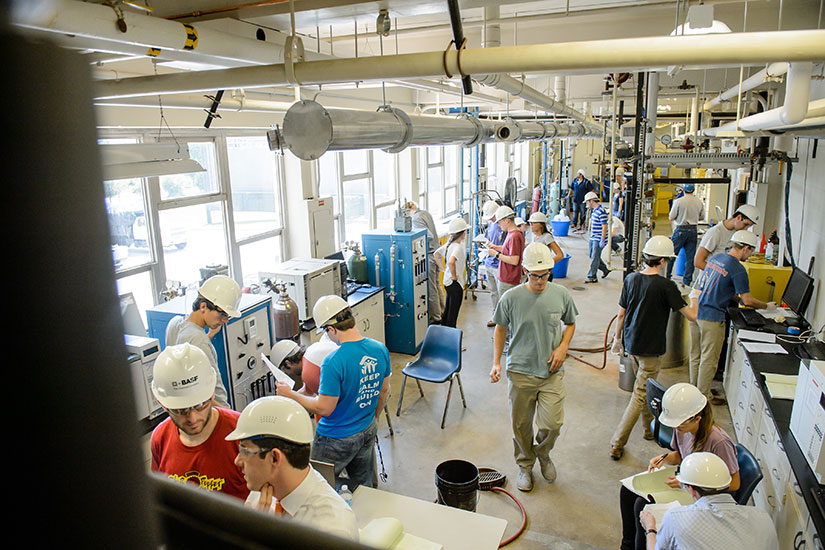
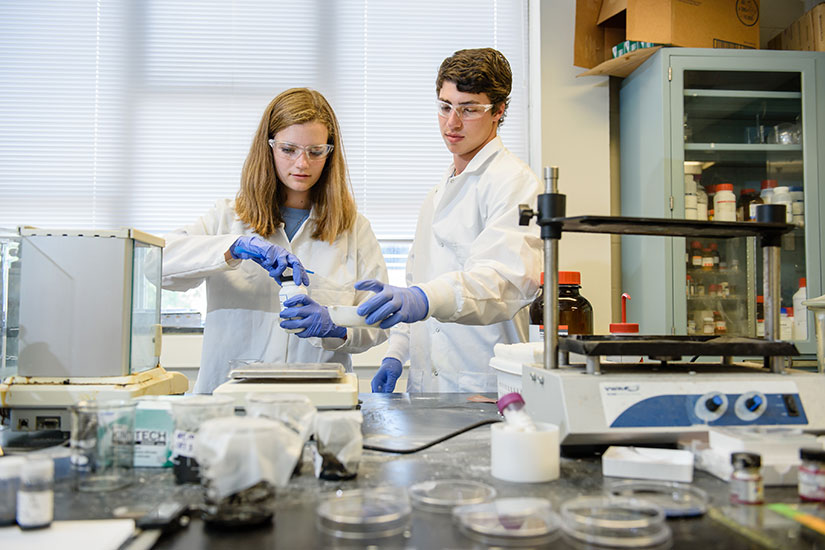
Safety Training
Every student or employee working in graduate research laboratories will have safety training appropriate to the work and the hazards present. New research students or employees will be required to complete a checklist of training as prescribed by the professor responsible for the research.
Safety Training
